In February 2021, Ferrari released information that electrified fans but also gave them a serious conundrum. The legendary team returns to the top class of endurance racing! This gave rise to questions: With what? Why just now? And what are their chances of winning? I got the answers at the model launch at Finali Mondiali 2022.
Today, even its fans may no longer remember that Scuderia Ferrari was once the top player in the 24 Hours of Le Mans. Overall, it won the world’s most famous long-distance race nine times, meaning that it currently holds the title of the third most successful car manufacturer in history in this respect.
This is a seldom-remembered fact, as the last of these victories took place in 1965 (and deserves a separate text since it was Ferrari’s strangest win which remains unclear to this day). At the time, the Italians won against the emerging US powerhouse Ford. Afterwards, they came close to beating Ford and Matra a few more times but would never again take the top spot on the podium.
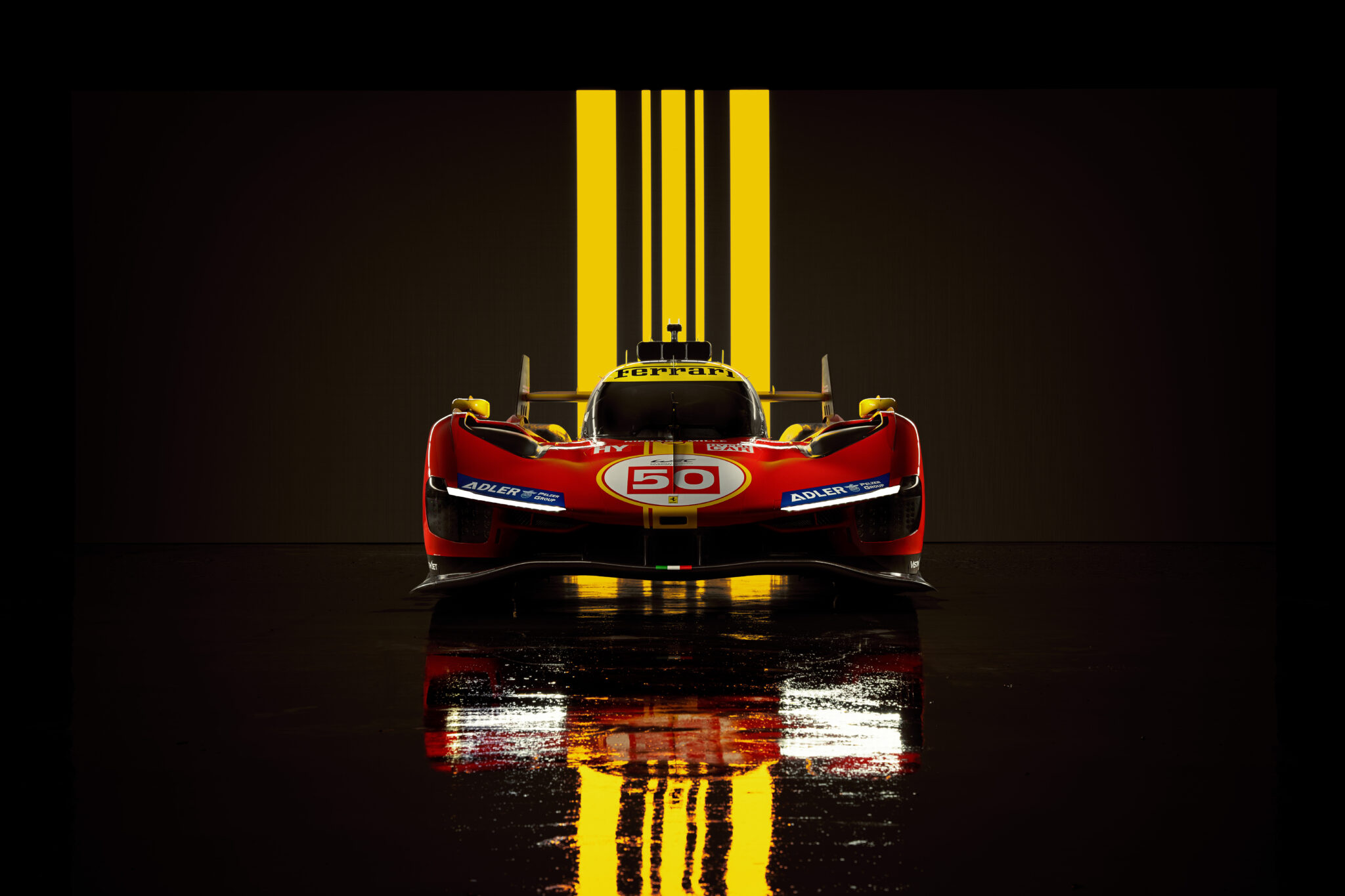
Eventually, Enzo Ferrari concluded that his relatively small team could not stay competitive enough on all of the world’s major racing fronts and decided to withdraw from long-distance racing in favour of focusing on Formula 1. That was in 1973.
In June 2023, exactly 50 years since that race and 100 years since the first edition of the 24 Hours of Le Mans, Ferrari will return to fight for the top prize. The starting line will feature two red cars from the new Hypercar class, labelled with starting numbers 50 and 51, which refer to this anniversary and the number that once appeared exceptionally often on the Maranello cars that would go on to win the 24 Hours of Le Mans.
There will be many more references to the history of half a century ago. With its paintwork and even its name, the 499P refers to the Ferrari 312 PB — the team’s last model to compete at Le Mans. Featuring a similar red livery interspersed with yellow stripes, the Italians’ new weapon in the 24-hour classic is bound to stand out. In keeping with the brand’s tradition, the numerical designation of “499” indicates the displacement of one cylinder, expressed in cubic centimetres. The letter “P” stands for prototype (i.e. not a GT-class design based on a road model).
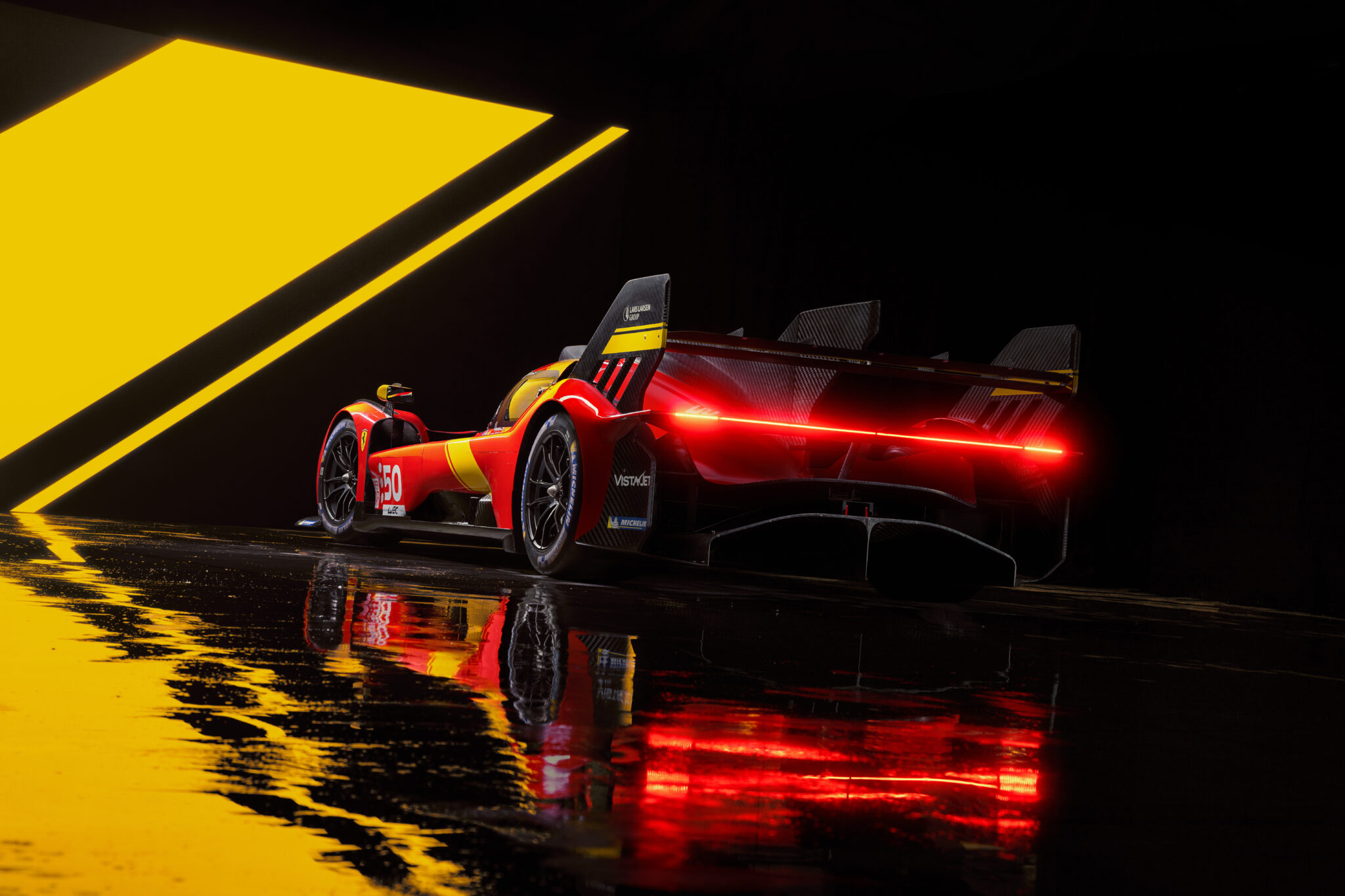
More specifically, the 499P will compete in the World Endurance Championship (of which the 24 Hours of Le Mans is one round) in the new Hypercar class, which recently superseded the LMP1. The new formula developed by the FIA together with the French ACO and IMSA, its US counterpart responsible for endurance racing on the other side of the Atlantic, has proved to be a hit.
The very limited line-up of recent years, virtually limited to Toyota and the tiny team of American billionaire (and well-known Ferrari collector) Jim Glickenhaus, will be joined alongside Ferrari by the likes of Peugeot, BMW and Cadillac as early as 2023, with Lamborghini and Alpine following in their footsteps in 2024.
The main reason why the top 24 Hours of Le Mans class has seen such a revival is the attractive way of calculating the costs of building a car compliant with the new regulations. LMH-type designs are already cheaper than LMP1s, and the financial requirements may be reduced even further if the participant opts to race with an LMDh-type car.
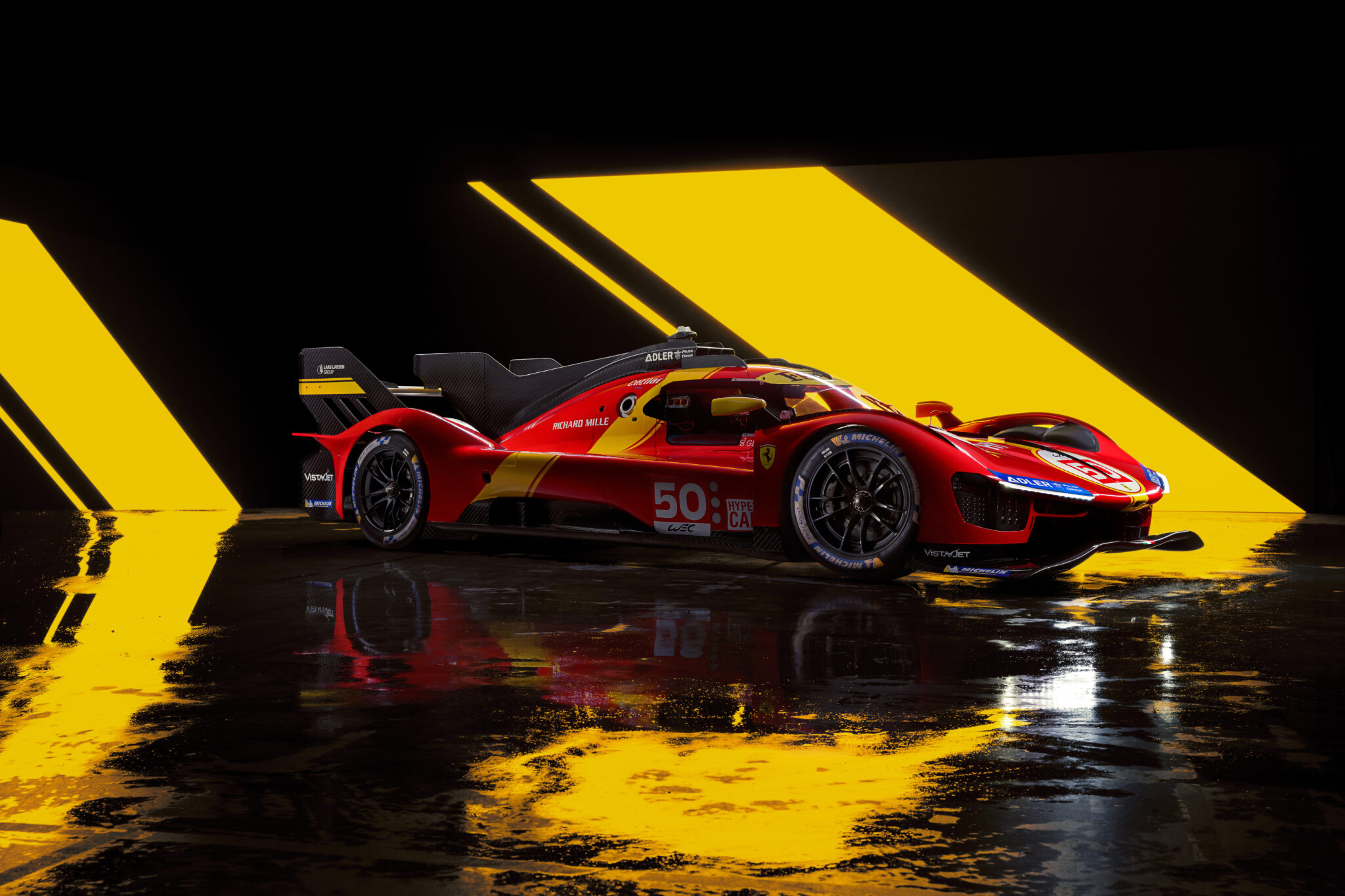
In theory, they will stand an equal chance of winning, as the race organisers intend to equalise both types through the Balance of Performance regulations. LMDh designs use an off-the-shelf chassis prepared by one of four sub-suppliers and the electric part of a hybrid powertrain. Several major brands like Porsche, BMW and Lamborghini took advantage of this opportunity, but Ferrari (as well as Toyota and Peugeot) went down the route of building a car entirely in-house.
Antonello Coletta, head of Ferrari’s car racing division Attività Sportive GT, says it was a natural decision for the company. “We are a race car manufacturer, so we can only return to Le Mans with a car developed entirely by us. This gives us the advantage of having full control over all areas of the car’s design and valuable experience that we intend to use in the development of our future road models. In the case of Ferrari, this technological transfer is always very large and significant. It was also one of the main motivators for our return to the top class of endurance racing,” Coletta explained.
Our conversation takes place in one of the garages at the Enzo e Dino Ferrari track in Imola, which fans are bound to recognise as a Formula 1 track. On the weekend of our meeting, however, it hosted the annual Ferrari celebration called Finali Mondiali. The event is an opportunity for the Italian racing team to summarise its plans and present new ones for the next year. This made it the perfect place to introduce the 499P and another future racing star — the Ferrari 296 GT3.
The Italians introduced me to their newest take on the Hypercar class at a secret soft launch a few hours before the world debut of this model. So there I am, trying to absorb as much as possible from Maranello’s next racing icon, with clueless fans wandering around the paddock on the other side of the doors, and dozens of FXX, 599XX and FXX-K models worth millions of dollars racing around the track.
For now, all I can see in front of me is a vehicle covered with a sheet, which draws my attention to the car’s dimensions. My initial though was — that’s one massive car! According to the current class regulations, the body must measure a full 5 m in length and 2 m in width, with a wheelbase of 3.15 m. That’s enough for a seven-seater SUV. At the same time, however, the 499P measures approximately 1.1 m in height and weighs 1030 kg.
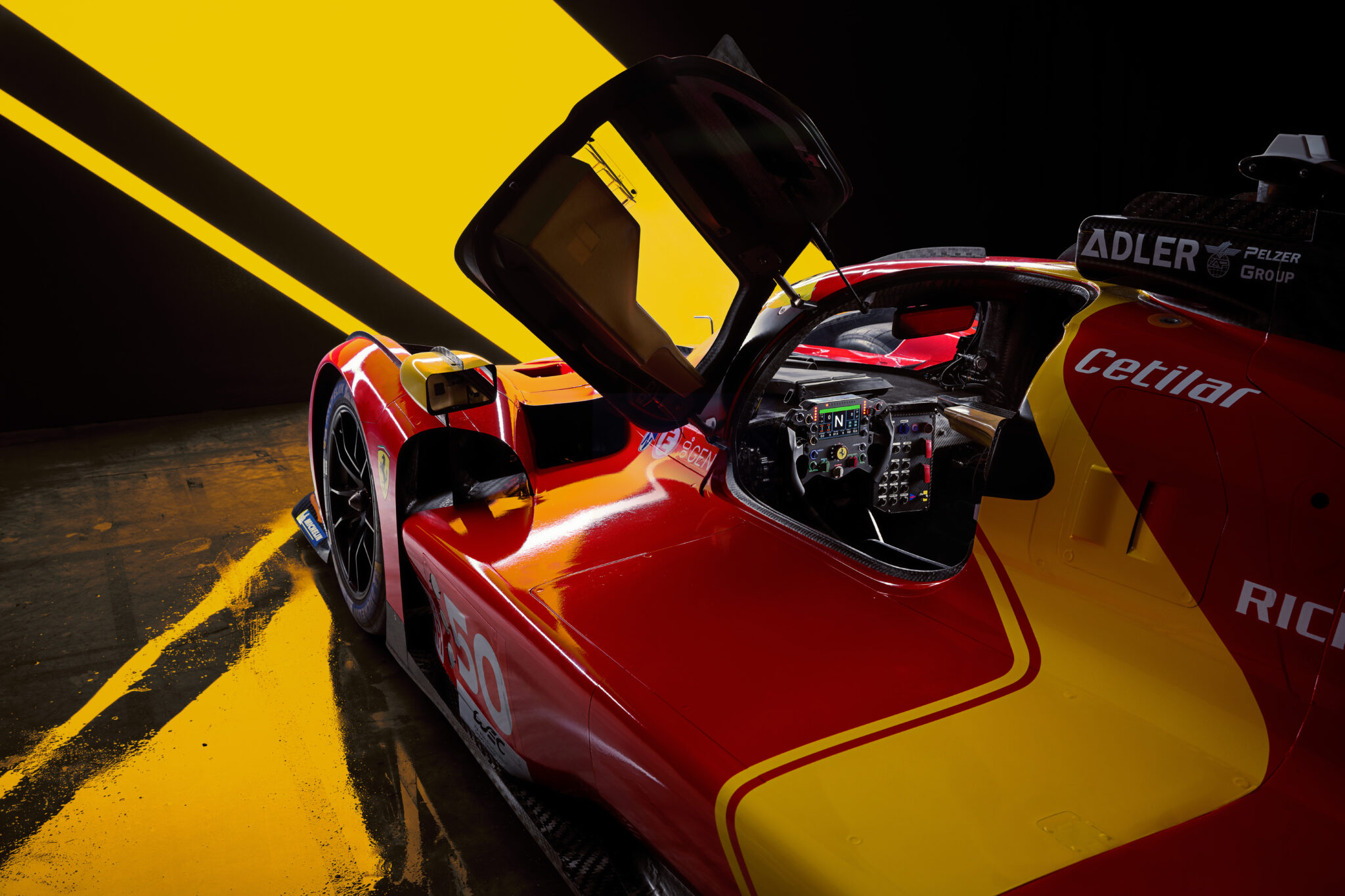
As the sheet drops, so does my jaw. It is an impressive, absolutely otherworldly car. Flavio Manzoni was involved in its design together with his design department responsible for Ferrari’s road models. It is no coincidence that stylistic themes from the brand’s last road model — the SP3 Daytona, a hypercar, no less — are present here.
We can learn a few more key parameters of the 499P from the FIA regulations. The wheels are 28 inches in diameter, the engine weighs 165 kg and the electric part of the drive generates 272 hp while the entire drive generates a total of 680 hp. This power output is transmitted to all four wheels upon reaching the speed specified in the regulations (only the rear drive is used at first).
Though Ferrari offers no more official information, I managed to verify some key facts in a conversation with Ferdinando Cannizzo, the chief engineer responsible for this fascinating model’s development. At its heart is an F163 series three-litre V6 engine from the new 296 GTB, as its configuration represents the optimum balance between performance, robustness and small external dimensions.
The engine itself is not dramatically different from that found in Ferrari’s road models. Nonetheless, it was combined with a high-performance 7-speed Xtrac sequential gearbox and an MGU-K hybrid system (similar but not identical to that of the Formula 1 Ferrari F1-75).
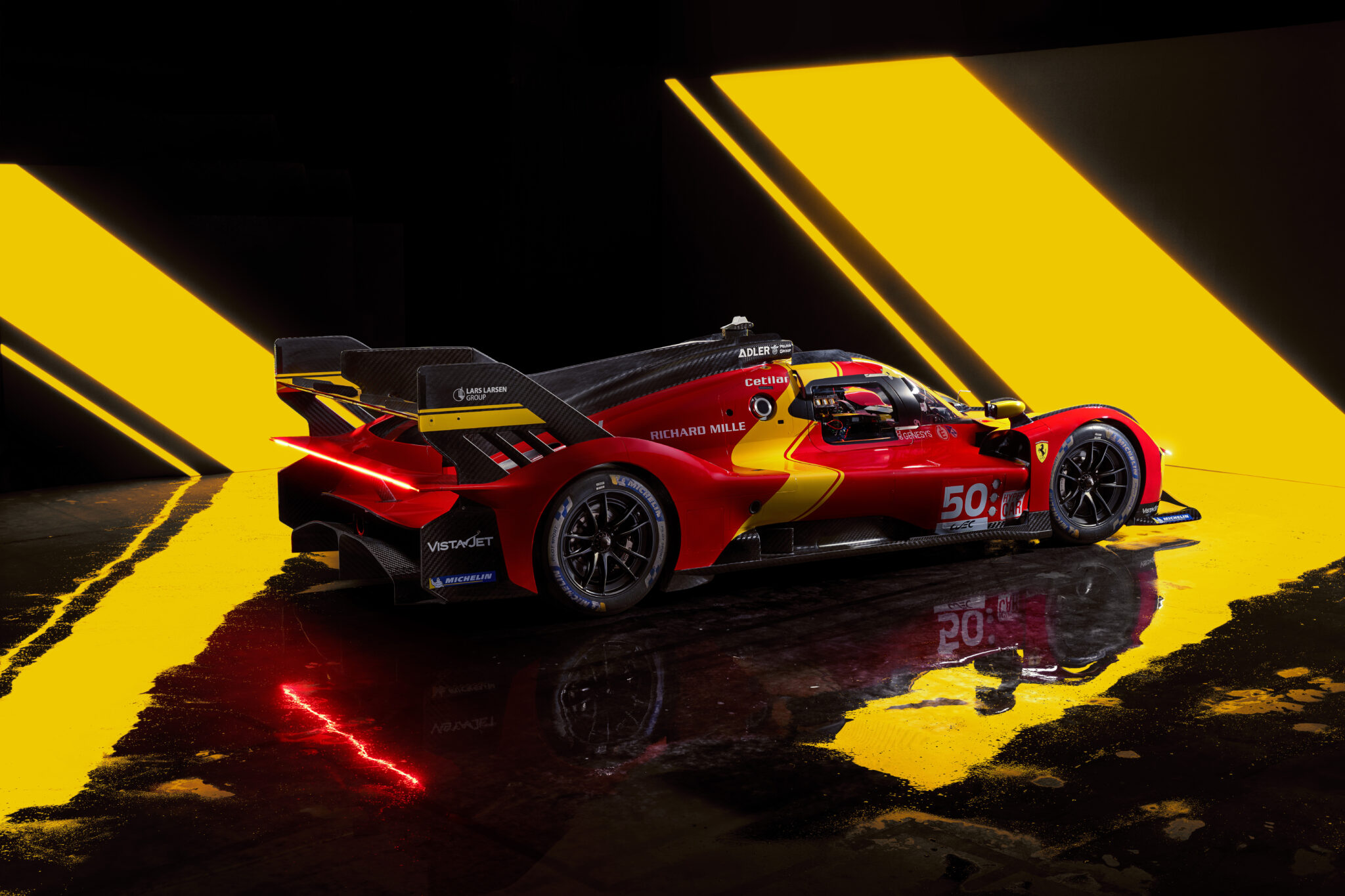
I also had the chance to talk to the team’s test drivers, who had been working hard for several months to develop the 499P, driving it on tracks around the world while it was still in its camouflaged form. Whilst they were unwilling to reveal too much, I did learn that the car drives surprisingly easily and is… comfortable. Reportedly, there is quite a lot of space inside. Comfort in this area is important both from the perspective of maintaining performance during long driving hours and versatility making the car suitable for different drivers.
In future, the 499P will also be made available to private teams, though it will be limited to the factory team during next year’s 24 Hours of Le Mans. The driver line-up has not yet been confirmed. However, it can be assumed that they will originate from the GT racing programme run by the Italian AF Corse team, which has worked with Ferrari for many years. The Maranello team is set to benefit from their vast experience in endurance racing, so we will be rooting for the Ferrari AF Corse team next season.
The first opportunity to do so and see how the 499P performs against the competition will come as early as mid-March at 1000 Miles of Sebring, the first round of the World Endurance Championship. Ferrari’s new car will tackle the legendary 24 Hours of Le Mans on 10–11 June 2023.